RETRO – The casual rotting zombie, an otherworldly demon or an axe-wielding Jack Nicholson are nothing next to this little undead girl in this game! In Monolith’s latest FPS, we’ll have to shoot our way through a few levels to find out what this not-so-charming child wants from us…
Mysterious”, “scary”, “creepy” are adjectives that FPS makers have always liked to associate their games with. Of course, there have been other styles, but the most popular and famous ones have always been set in abandoned space bases (Doom, Half Life), ancient haunted castles (Undying), or other places where the most terrifying monsters could be carved to pieces at any time. This time around, F.E.A.R takes place in less haunted locations, but in more gruesome situations. Our main enemy is a crazy guy who somehow manages to control the masses of various commandos with his mind, but the creepiest is the little girl who is always lurking behind us, giving us horrifying visions at the most unexpected moments. As you and your elite commando hero have to fight your way through the masses of enemy soldiers according to the rules of traditional FPSs, the horrors surrounding the little girl will slowly come to light.
Mulder is out of touch
Of course, the little girl herself is only one of the characters in Monolith‘s FPS, because it would be nice if we had to chase her ghost all the way through. At the very beginning of the game, a 35-something guy named Paxton Fettel, an army officer serving time in a cell, apparently goes nuts, goes berserk, and slaughters everyone around him. This in itself wouldn’t be such a tragedy (after all, one bullet to the head and then bye-bye…) if Fettel didn’t happen to be able to mentally control a secretly developed army of clones. In addition, Paxton himself and his men have a strange eating habit: they bite the throats (not the figurative sense of the word, but the original sense) and devour the flesh of anyone they catch.
Although in such situations Mulder and Scully are usually sent to the scene of the crime, in this case, it was up to our hero, a rookie soldier of the F.E.A.R. squad, to find Paxton and his zombies. Our colleagues are suspicious, as we’ve only been with the squad for a few weeks, but our commander seems to trust us.
That’s pretty much the outline of the game’s story, which then becomes a more convoluted, complex, but all the more interesting one. The story is clearly one of the most professionally developed in F.E.A.R. (even if it does slow down a little at one point in the game), with cleverly dosed, terrifying – Silent Hills-esque – transition reports that increasingly pull the veil back on the mysteries surrounding the little girl and Paxton. The storytelling follows in the footsteps of classic horror movies, and there are occasional surprising twists and turns: some characters reveal astonishing things, others are not who they seem… Well, this could be the content of X-Files 457 in a nutshell, but the fact is that the story is by far the most ambitious of the current FPS line-up.
Special credit is due to the various phone messages found and scraps of information read from laptops, which slowly piece together who is who and what their role in the bloody events is. Although the solution itself is nothing new (in both System Shock and Half-Life we read them on computers, in Doom 3 on PDAs), here they are somehow written in a more professional and lifelike way, with short monologues, constantly feeding in information. For certain characters, it’s even worth paying attention to what they say or what words they use.
Neo spins in the Matrix
The FPS part itself in F.E.A.R is not radically different from the traditions laid down by Doom, Quake, Half-Life and others. There’s no “one shot and you die” ultra-realistic damage system, no Halo-like “recharge your shields and rest” system. As in classic FPSs, you can pick up health packs or “armour” (or: bulletproof vests) that recharge and protect your health. To make a subtle difference, the creators have added two small innovations to the system. One of them is to increase your health and ‘reflex’ bar by using nutrients dropped on the pitches: injecting one of these into yourself will give you a little boost.
The other is the “reflex system” itself, which is nothing more than good old bullet time. When you turn it on, everything slows down around you, you see the bullets approaching in slow motion, and the enemy is also condemned to slow down as you shoot them to bits. I’m not claiming that Monolith’s flick will win the ‘most original game idea of the year’ award, but the fact is that F.E.A.R. has so far managed to use this effect, made famous in the Matrix and Max Payne, in the most spectacular and effective way. Since it’s a tough challenge to take down the commandos – whenever they’re not down – we’ll be using this ability almost constantly.
So the AI is really great (more on that below…), but luckily we’ve got a few tricks up our sleeve to use against it in addition to reflex (aka bullet time). For example, you can peek around corners of streets, buildings and corridors to line up unsuspecting enemies, or you can shoot them while crouching.
Soldier AI
While I’m on the subject, I must also mention artificial intelligence of F.E.A.R, which is finally really first class. Instead of just jumping out and back from behind cover, the enemy behaves in a much smarter, more tactical way. For example, when they see our hero, the commandos immediately start shouting to their comrades, who immediately rush to their aid. But they don’t attack us like a mob, they try to corner us from all sides: for example, if we’re standing in a corridor with multiple access points, they’ll often go around us and attack us from behind, or even try to grenade us out from behind cover.
So the teamwork of the enemy deserves credit. In addition to the regular commandos, soldiers and security guards, we also encounter various special invisible units that look a lot like Sam Fisher, who can sneak up on us with their brutally damaging claws and slash at us out of nowhere.
The nailgun armoured soldiers don’t hide or jump much (they’re too slow for that), but they do deliver very big hits and never move alone. Also, they take a long time to finish off, so you’ll be sweating by the time you finish them off. The most nerve-wracking part was fighting the walking mecha robots, where I had to spend fifteen minutes before I could finally finish them off with a time delay and a shotgun. The only good thing is that they had moderate AI because if they had been even smart, I would have probably been regularly punched in the gut… Anyway, I think these Mechwarrior wonders were not suited for this game, I believe that one of the developers fantasizes about them day and night, but they are breaking the game’s style.
Destroyed buildings, offices
Monolith has never relied on other firm’s graphics engines and has always been comfortable programming its own engines, and F.E.A.R. is no exception. And what they’ve done in the graphics department is still top-notch. The reflection effects using various shaders, for example, can be admired on the pools of blood glistening in the corridor. Or there’s the professionally executed spun glass windows, which I’ve only seen in Splinter Cell: Chaos Theory, but nowhere else since. While the depicted locations themselves are unfortunately not very original, varied, and hark back many times to other older FPSs (construction sites, ruined buildings, office blocks), they are undoubtedly made the most of by the monolithic faces. Each of these environments is elaborated in eerie detail: the dirty, dilapidated houses have broken furniture and furnishings that reveal that people once lived there, while the huge multinational office buildings are filled with high-tech electronic devices and giant advertising posters.
Some of these objects allow us to indulge our destructive tendencies, others do not, and it is a little disillusioning that, alongside the smashable monitors, laptops and security equipment, we can still find the vending machines intact, despite our futile attempts to desecrate them. But let’s not be insatiable…
But what’s even more impressive is the effect when you shoot into a wall and the bullet holes leave wide craters of varying sizes and a thick cloud of dust in the air. The creators even made sure that when the dust is illuminated by a torch, it is bathed in a milky white light, and if you happen to get caught in it, it blinds your hero: you can’t see them firing at you.
Soldiers and ghosts, oh my!
All the more so because the bullet time depiction in F.E.A.R really beats anything that has been attempted in Max Payne, Blood Rayne, or Enter the Matrix. When our hero uses his reflex abilities, the edge of the screen “reddens”, slowing enemy commandos turn a bluish hue, and bullets cast a hot wave effect in the air. Monolith’s only handicap is that the whole bullet-time effect is a bit dated, but that doesn’t detract from the fact that the visuals are right up there.
Also, the makers have made very professional use of the good old rag doll effect: when enemy soldiers are hit by bullets, their bodies shake with excellent realism, but the coolest part is when you nail the enemy to the wall with the nail gun.
During the walkthroughs you’ll encounter a wide variety of NPCs, they’re relatively well developed, but here I wasn’t groping the floor for a fallen chin. The major characters, such as Paxton Fettle, are quite punchy, but the lesser ones not so much.
It was funny when, in the course of a conversation, it was revealed that one of our companions, the pretty commando girl, was actually of Korean descent, which was supposedly implied by her facial features, but this was not clear to me from the graphic design…
The enemy commandos are depicted in a very clever trick by Monolith: since almost all of them are wearing the same helmet, their faces don’t repeat (or maybe they do, but we don’t see it). The detail of the soldiers’ outfits is spot on, but since we only fight them in 70% of the game (security guards in the remaining 20, ghosts in 10), I found myself less than impressed after a while.
Good action, decent effects
All the more so because the bullet time depiction really beats anything that has been attempted in Max Payne, Blood Rayne, or Enter the Matrix. When our hero uses his reflex abilities, the edge of the screen “reddens”, slowing enemy commandos turn a bluish hue, and bullets cast a hot wave effect in the air. Monolith’s only handicap is that the whole bullet-time effect is a bit dated, but that doesn’t detract from the fact that the visuals are right up there.
Also, the makers have made very professional use of the good old ragdoll effect: when enemy soldiers are hit by bullets, their bodies shake with excellent realism, but the coolest part is when you nail the enemy to the wall with the nail gun.
During the walkthroughs you’ll encounter a wide variety of NPCs, they’re relatively well developed, but here I wasn’t groping the floor for a fallen chin. The major characters, such as Paxton Fettle, are quite punchy, but the lesser ones not so much.
It was funny when, in the course of a conversation, it was revealed that one of our companions, the pretty commando girl, was actually of Korean descent, which was supposedly implied by her facial features, but this was not clear to me from the graphic design…
The enemy commandos are depicted in a very clever trick by Monolith: since almost all of them are wearing the same helmet, their faces don’t repeat (or maybe they do, but we don’t see it). The detail of the soldiers’ outfits is spot on, but since we only fight them in 70% of the game (security guards in the remaining 20, ghosts in 10), I found myself less than impressed after a while.
Not that S.C.A.R.Y.
The word “F.E.A.R.” is a kind of witty abbreviation for the special squad called “First Encounter Assault and Recon”, of which our hero is a member, he obviously hates the fact that we’re going to get our brains scrambled in it… Did I get my brains scrambled in it? The short answer is no. I’ll explain the longer answer in a bit…
Since I didn’t have the opportunity to test the game in my sweet solitude late at night in the Vivendi office building in Frankfurt in 2005, the environment for full parry was not there, but I actually feel that I wouldn’t have been scared even alone. My biggest problem was that the commandos are simply not scary, and we spend a very significant portion of the game fighting them. I know some people didn’t even sleep well with the demons in Doom 3, but they really gave me the creeps, and a masked commando is not a character I’m going to sleep with my back against the wall, even if I wouldn’t fight them in real life.
The locations are… hmm… I guess you could say some of them are really creepy, but if you compare the F.E.A.R. office building with the Silent Hill 3 shopping mall, the latter takes the cake for scares. The funny thing is, you can make ordinary environments creepy, but somehow Monolith just doesn’t know how to do that, or maybe they’re just too spoiled by Konami’s Silent Hills.
Occasionally, Paxton Fetter appears and makes some sinister statement that says a lot (nothing…), and then his ghostly body falls apart – it’s effective at first, but the second time around, you won’t be scared to stand back. The appearances of the undead girl are a little more horrifying, especially when she suddenly appears in front of us, or when her body gradually turns into a rotting corpse, but compared to similar scenes in, say, The Circle, it falls well short of that dreadful “para-meter”.
All in all, if I had to put F.E.A.R. somewhere in terms of scares, I’d put it somewhere near the level of the X-Files.
No para, be cool!
So, at the end of this article, the only question left unanswered is whether F.E.A.R. is an epoch-making game or just one of many horror FPSs. If we look only at the technical implementation, Monolith has, as always, done a first-rate job: the graphics engine is revolutionary and, despite the minor flaws and sloppiness mentioned earlier, can be compared to Doom 3 or Half-Life 2.
In terms of gameplay, there’s not a lot that’s new: there’s not much change, and the game will stall out at one point, just like Doom 3 did, only to pick up again towards the end.
I’ve already mentioned the scaremongering: I think Monolith could have worked on that as if they weren’t so at home in that area. The use of the character of the little girl is very ‘stylistic’, but perhaps because she has been in so many horror films lately, it didn’t really jar me.
What does make F.E.A.R. stand out from the rest of the FPS field is the great AI and well-developed story, which is something that the other big guns (Far Cry, Doom 3, Half-Life 2) have not done so well. That’s why I (also) recommend all FPS fans to make sure they get through Monolith’s latest star because there will be surprises at the end of the story…
-BadSector (2005)-
Pro:
+ Twisty story
+ The little girl is relatively awesome
+ Correct FPS gameplay with good AI
Against:
– Overall not scary enough
– Elaboration of NPCs
– Mechwarrior, what’s the point?
Publisher: Vivendi
Developer: Monolith Entertainment
Style: horror FPS
Release date: 18 October 2005.
F.E.A.R.
Gameplay - 7.8
Graphics (2005) - 8.5
Story - 8.2
Music/audio - 8.4
Ambiance - 8.4
8.3
EXCELLENT
What does make F.E.A.R. stand out from the rest of the FPS field is the great AI and well-developed story, which is something that the other big guns (Far Cry, Doom 3, Half-Life 2) have not done so well. That's why I (also) recommend all FPS fans to make sure they get through Monolith's latest star because there will be surprises at the end of the story..

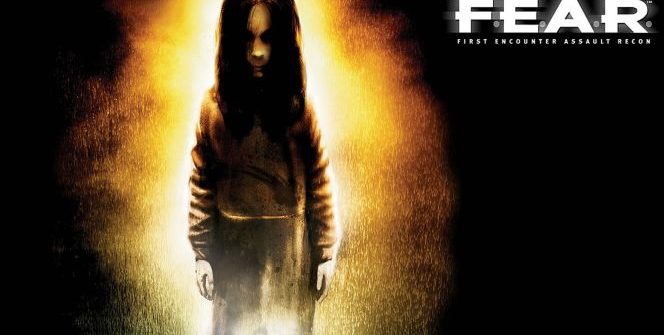
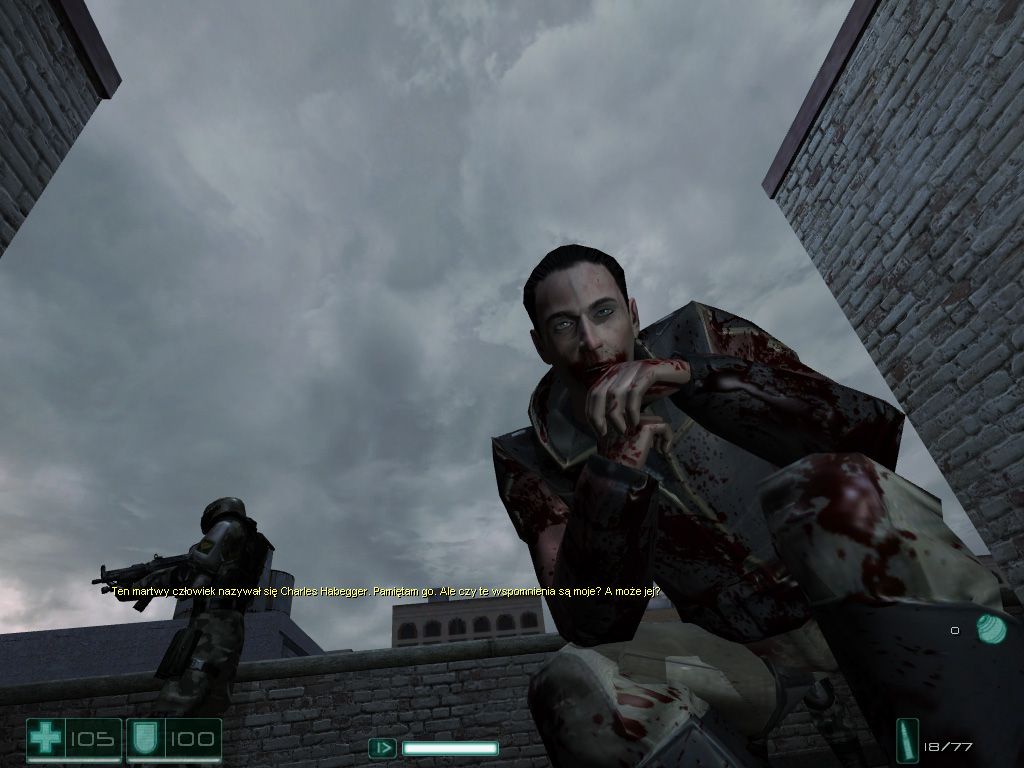
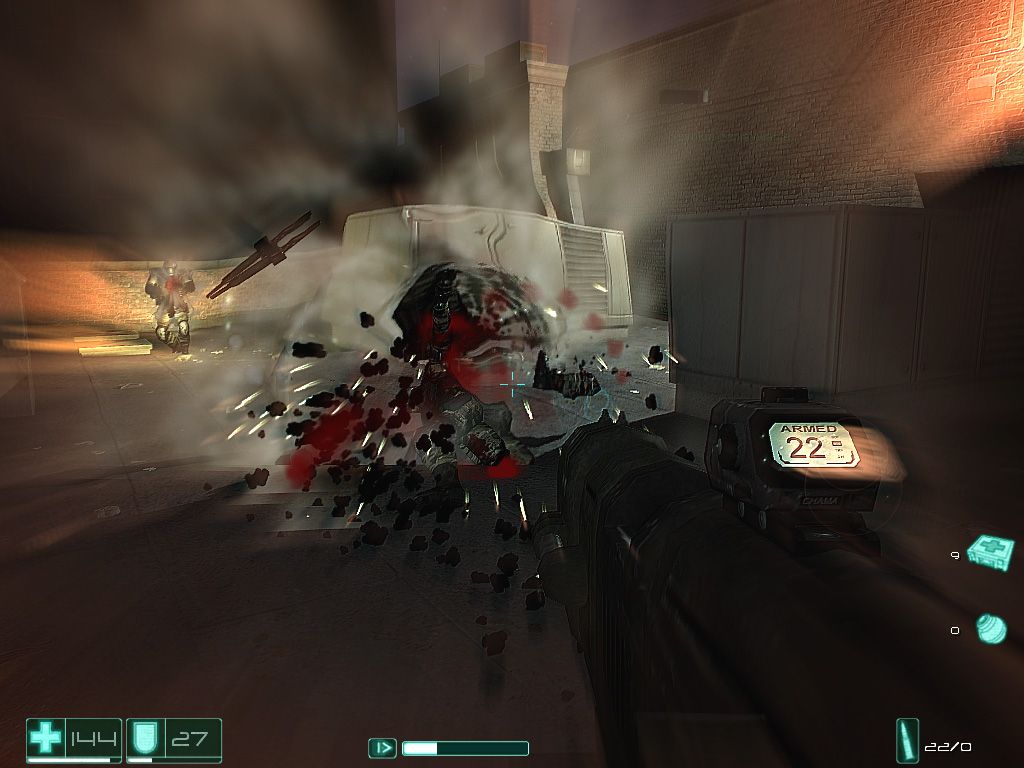
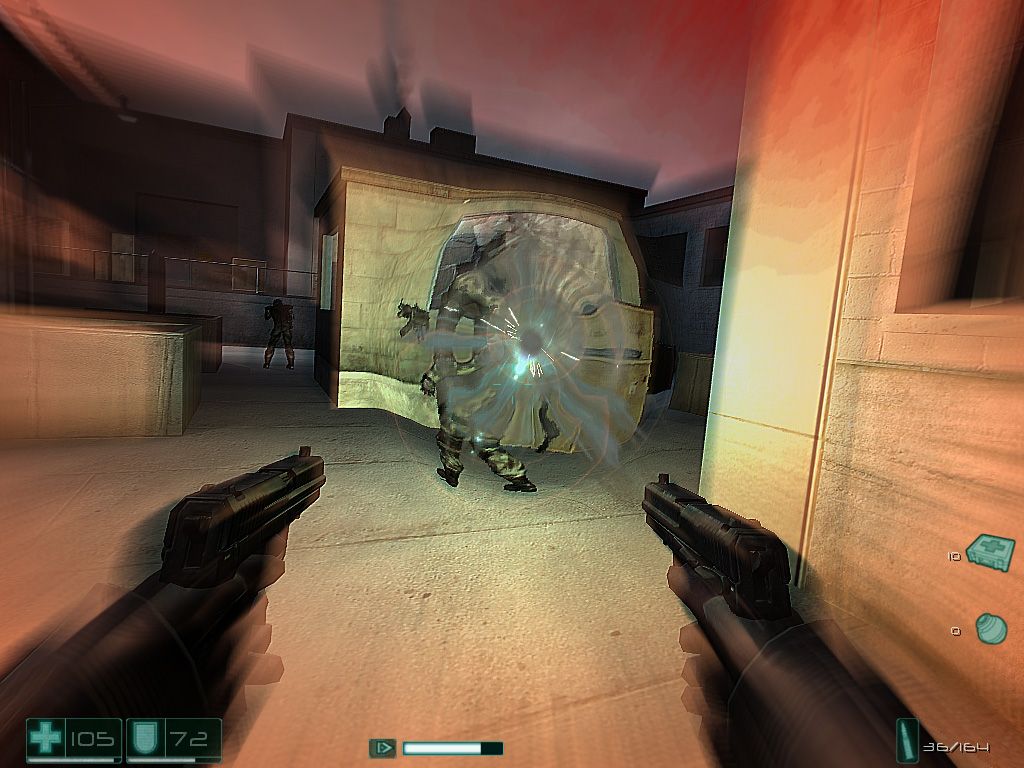

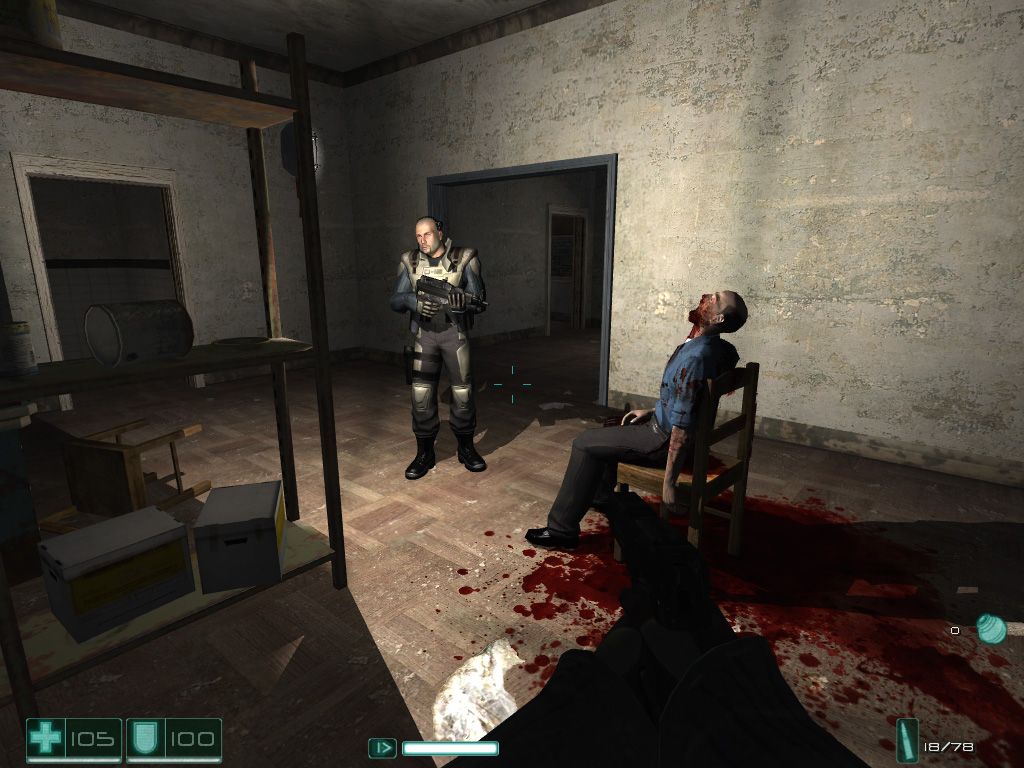
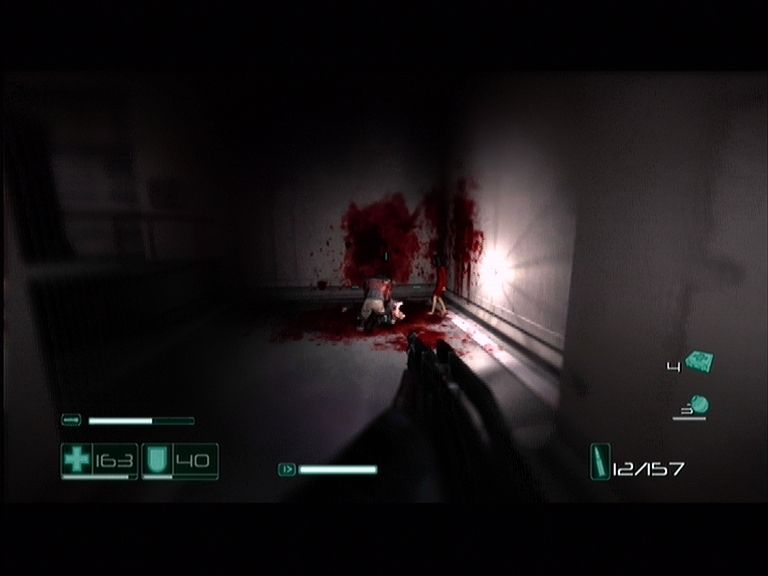
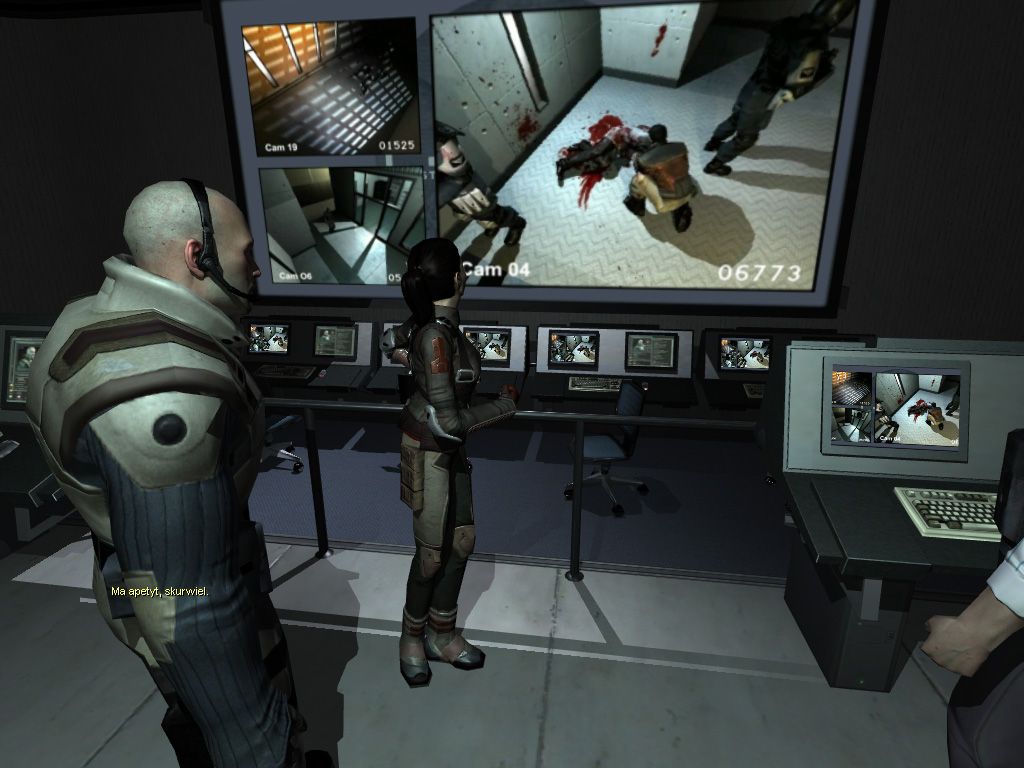
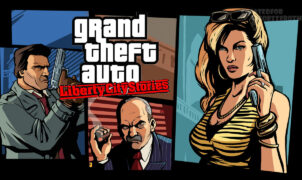

![Vampire: The Masquerade - Bloodlines – Prepare for Your Final Sunset! [RETRO-2004]](https://thegeek.games/wp-content/uploads/2025/10/theGeek-Vampire-the-Masquerade-Bloodlines-302x180.jpg)


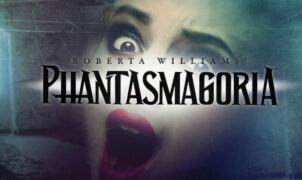

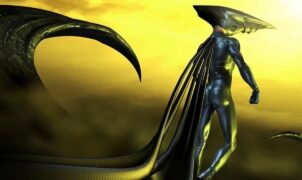






Leave a Reply